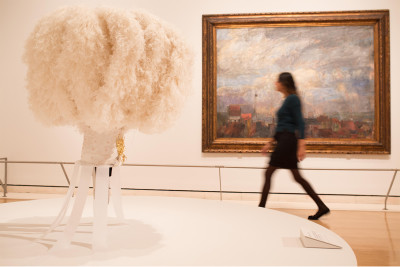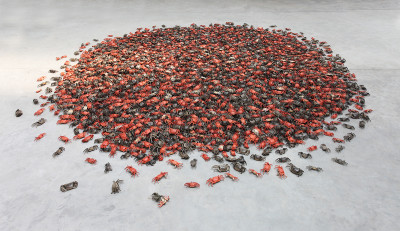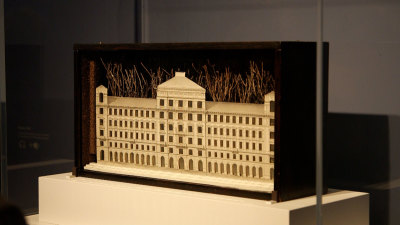Curator’s picks: Radical Geometry
Curator’s picks: Radical Geometry
By Adrian Locke
Published 1 August 2014
‘Radical Geometry’ is now in full swing and with such a wealth of inspiring works on view, we asked co-curator Adrian Locke to choose his favourites.
-
Joaquín Torres-García, 'Construction in Black and White', 1938
I find this image with its vacant grid-like construction mesmerising. Somehow Torres-García effortlessly captures the timeless elegance of Inca stonework or sophisticated terracing while also referencing the modern city; never has empty space felt so busy.
-

Joaquín Torres-García, Construction in White and Black, 1938.
Oil on paper mounted on wood. 80.7 x 102 cm. The Museum of Modern Art, New York. Gift of Patricia Phelps de Cisneros in honour of David Rockefeller, 2004. Photo Colección Patricia Phelps de Cisneros..
-
Lygia Clark, 'Cocoon No. 2', 1959
The precursor to her famous ‘Bichos’ series (1960-62) of articulated sculptures, this work captures the moment Clark begins to move painting from the wall and transform it into sculpture. Using the strength and flexibility of aluminium this painting appears, like the proverbial butterfly exiting the cocoon, metamorphosed.
-

Lygia Clark, Cocoon No. 2, 1959.
Enamel on aluminum. 30 x 30 x 11 cm. Colección Patricia Phelps de Cisneros. © The World of Lygia Clark Cultural Association.
-
Lygia Pape, Untitled (from the series 'Weaving'), 1960
The pronounced grain of this woodcut contrasts with the delicate incised geometric lines to create an image that appears almost like a landscape. The beautiful texture is incredibly seductive whilst referencing wood (from which Brazil takes its name) that connects popular art and indigenous culture as well as concrete which assumes the texture of wood in the process of construction.
-

Lygia Pape, Untitled (from the series Weaving), 1959.
Woodcut on paper. 24.4 x 24.8 cm. Colección Patricia Phelps de Cisneros. © Projeto Lygia Pape.
-
Jesús Soto, 'Nylon Cube', 1990
Soto’s Nylon Cube defies imagination. It is both transparent and opaque; one can glimpse people and other works through it and yet at other times it appears solid. Like much of his work the sculpture responds to your presence, coming alive as you walk towards it and past it defying description in the process.
-

An installation view of 'Radical Geometry at the RA'. Jesús Soto, Nylon Cube, 1990.
Nylon painted. 276.5 x 120.5 x 120.5 cm. Colección Patricia Phelps de Cisneros. Photo © Royal Academy of Arts, London. Photography: Benedict Johnson. / © ADAGP, Paris and DACS, London 2014.
-
Gego [Gertrude Goldschmidt], Untitled, 1967
Gego is known for her ethereal sculptures that gently float in the gallery casting ever changing shadows. Yet she did not think of her work as sculptures but rather as three dimensional drawings. The delicate lines of this drawing, some broken, others enmeshed, appear alive emphasising the absence of distinction she made between both disciplines.
-

Gego (Gertrude Goldschmidt), Untitled, 1967.
Ink on paper. 65.1 x 49.8 cm. Colección Patricia Phelps de Cisneros. © Fundación Gego.
-
Radical Geometry: Modern Art of South America from the Patricia Phelps de Cisneros Collection is in The Sackler Wing of Galleries at the RA until 28 September 2014.
Adrian Locke is the co-curator of Radical Geometry at the RA.








